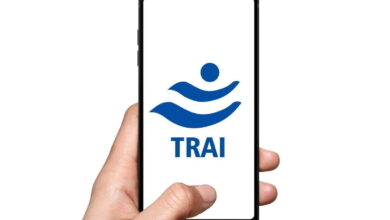Telecom Providers Adapt to Digital Era as PSA Market Heats Up

There’s been a lot of talk about convergence lately, most of it in the context of cybersecurity. But telecommunications services providers (TSPs) and managed services providers (MSPs) are also converging, and that is driving a major opportunity for the channel, especially with regard to professional services automation (PSA). According to Grandview Research, the market for PSA software is poised to nearly double within the next seven years. This growth raises important issues and will have a substantial impact on the telecommunications and MSP industries.
Evan Rice, president and COO of Rev.IO—a billing software company that specializes in enhancing the efficiency of MSPs, IoT, and telecom companies—said traditional telecommunications services providers are rapidly transforming as they embrace broader markets, and are driving convergence with MSPs.
“There are unique aspects of telecoms that make them prime for disruption through PSA,” Rice said. “First, they deliver the most critical connectivity layer that the rest of the tech stack rests on. But also, second, telecoms are seeing a kind of ‘race to zero’ as far as cost — Google Meet is free and Microsoft Teams is included in the productivity suite, for example. So, that’s driving down margins on these services and they have to replace that revenue stream. They don’t want to be left out, so they have to diversify. On the MSP side, they have a slightly different issue; they are used to putting services together and delivering these, even with professional services, and it’s natural outgrowth of what they’re doing. They might have a PSA practice, but they don’t have the tools for telecom specifically,” he explained.
Driving Convergence
Of course, these needs overlap, and that is what’s driving the convergence from both sides, Rice said. “It’s a good fit: MSPs are looking to get into the telecom solutions and services delivery aspect and, from the telecom side, they are looking at how to deliver value-added services with the technology,” he said.
In addition, he said, a focus on customer experience has become critical as organizations want custom-tailored solutions from a single services delivery partner.
“We are seeing the convergence of traditional comms with cloud and mobility services,” said Rev.io CIO James Phillips. “Even the way customers are buying is changing. They want full technology stack consulting – they’re asking, ‘How can I do full one-vendor sourcing? Who’s enabling those services?’ And, of course, all that is dependent on the data connectivity layer. The end customer may already have trust with their communications provider to deliver that layer plus security, but they want a single provider,” he said.
Convergence is making that shift easier, Phillips said, but it’s also just a natural result of the evolution of communications services delivery. Communications services evolved from PBX, trunking, landlines and specialized service providers, and now are delivered and consumed in the same way as SaaS services. Now, telecom, unified communications, even collaboration solutions like Microsoft Teams are delivered via SaaS and the technology is a natural fit to sell through the channel, he said.
It also makes it easier to deliver security, he added.
“Security is simplified with this highly integrated model. Having separate vendors and partners is not just inefficient, but if you are bifurcating security, that introduces the potential for security vulnerabilities, especially if you have to secure solutions from two different vendors,” Phillips said.
While convergence is making services delivery and security easier, the fact is that tracking usage, billing, tax and other back-office necessities remains complicated. That’s where PSA enters the equation.
Where PSA Fits In
“On the back end, you have all this complex and sophisticated billing, usage, tax information, etc.,” Rice said. “There’s compliance with different regulations, managing contracts and agreements, understanding rates, tracking profitability of customers. And for some MSPs and TSPs, they may be physically going on site with equipment — how are they measuring utilization of human resources? What we’re seeing is across all markets there’s additional profit and efficiency pressure, and that’s driving the need for automation.”
Rev.io’s mission is to help customers, TSPs and MSPs build profits. The company’s acquisition of TigerPaw gave them a PSA desktop app with a large customer base, but it needed a facelift, Rice explained. The company is currently building out an AI-first integrated solution that will offer a single provider for all stack for customers and, for MSPs, a back office stack integrated with the front end that includes a voice offering. Customers maintain control of their data; it doesn’t go into any public AI models while still enabling them to make better, faster decisions using PSA, Phillips said.
“We allow MSPs to use this to assess, ‘Is the project, the customer, the contract profitable? How can I figure that out without using my full-time employees to have to do this work? Using our solution,” Rice said.



